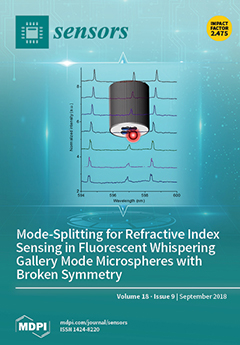Open AccessArticle
A Disposable and Multi-Chamber Film-Based PCR Chip for Detection of Foodborne Pathogen
by
Nam Ho Bae, Sun Young Lim, Younseong Song, Soon Woo Jeong, Seol Yi Shin, Yong Tae Kim, Tae Jae Lee, Kyoung G. Lee, Seok Jae Lee, Yong-Jun Oh and Yoo Min Park
Cited by 15 | Viewed by 6841
Abstract
Since the increment of the threat to public health caused by foodborne pathogens, researches have been widely studied on developing the miniaturized detection system for the on-site pathogen detection. In the study, we focused on the development of portable, robust, and disposable film-based
[...] Read more.
Since the increment of the threat to public health caused by foodborne pathogens, researches have been widely studied on developing the miniaturized detection system for the on-site pathogen detection. In the study, we focused on the development of portable, robust, and disposable film-based polymerase chain reaction (PCR) chip containing a multiplex chamber for simultaneous gene amplification. In order to simply fabricate and operate a film-based PCR chip, different kinds of PCR chambers were designed and fabricated using polyethylene terephthalate (PET) and polyvinyl chloride (PVC) adhesive film, in comparison with commercial PCR, which employs a stereotyped system at a bench-top scale. No reagent leakage was confirmed during the PCR thermal cycling using the film PCR chip, which indicates that the film PCR chip is structurally stable for rapid heat cycling for DNA amplification. Owing to use of the thin film to fabricate the PCR chip, we are able to realize fast thermal transfer from the heat block that leads to short PCR amplification time. Moreover, using the film PCR chip, we could even amplify the target pathogen with 10 CFU mL
−1. The artificially infected milk with various concentration of
Bacillus cereus was successfully amplified on a single film PCR chip. On the basis of the reliable results, the developed film PCR chip could be a useful tool as a POCT device to detect foodborne pathogens via genetic analysis.
Full article
►▼
Show Figures






